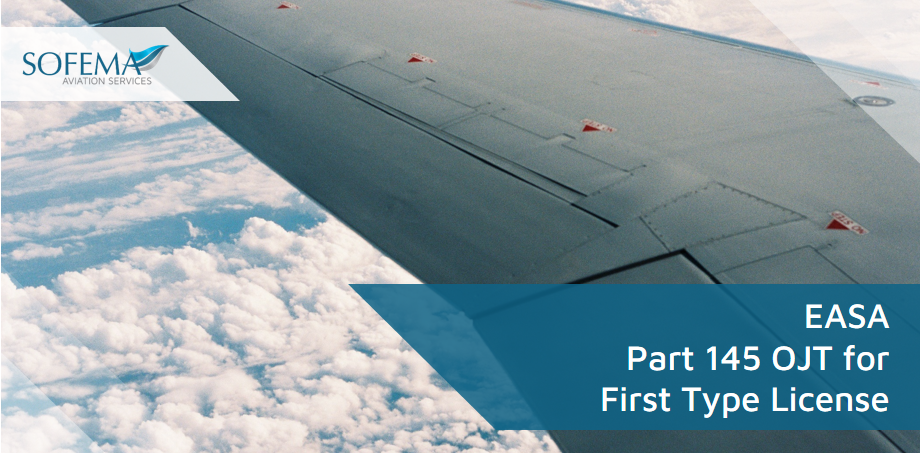Sofema Aviation Services (SAS) www.sassofia.com considers key aspects related to the practical delivery of OJT within the EASA Part 145 Workplace. Updated regulatory requirements driven by EASA Regulation – EU) 2023/989
Introduction
The requirement for participating in supervised practical training during On-the-Job Training (OJT) is governed by EASA Part 66 and Part 145, specifically as detailed in Appendix III to Part 66. The following summary provides a detailed discussion with references to the applicable regulations.
Direct Supervision Requirement
According to EASA Part 66 Appendix III (Section 6.1. General Requirements for OJT), the applicant undergoing OJT must perform maintenance tasks under the direct supervision of qualified certifying staff. This ensures that:
- The trainee acquires the necessary practical skills to perform the tasks to the required standard.
- There is immediate oversight to prevent errors, ensuring compliance with safety and maintenance procedures.
The supervising staff must:
- Hold the necessary privileges for the maintenance tasks being supervised.
- Be familiar with the applicable procedures and standards.
- Ensure that the work complies with the aircraft maintenance data and regulatory requirements.
Regulation Reference: EASA Part 66 Appendix III (6.1):
6.1 General
The OJT is the training that the applicant is given on a particular aircraft type in a real workplace, having the possibility to learn maintenance best practices and correct release-to-service procedures. The OJT shall comply with the following requirements:
- The list of the OJT tasks and programme shall be accepted by the competent authority which has issued the maintenance licence before starting the OJT training.
- The OJT shall be conducted at one or more maintenance organisations appropriately approved according to this Regulation for the maintenance of that aircraft type. One of those organisations shall control the OJT.
- The applicant shall have a category A, B or L5 licence before undergoing the OJT or have finished the theoretical type training and cumulated at least 50 % of the basic experience requirement (point 66.A.30) as regards the category of aircraft he or she is trained for.
- The applicant shall start and complete the OJT within 3 years preceding the application for the first type rating endorsement. At least 50 % of the OJT tasks shall take place after the related aircraft theoretical type training has been completed.
- (The applicant shall undergo the OJT under the mentorship of a qualified mentor or mentors on a one-to-one supervision basis, during which the mentors verify the technical knowledge, skills, and responsibilities of a typical certifying staff.
During the OJT, the mentors also transmit knowledge and experience to the applicant, providing the necessary advice, support, and guidance.
- Each task shall be signed off by the applicant and refer to an actual job card/work sheet, etc. The mentors shall verify and countersign off the tasks performed during the OJT because they shall assume the responsibility for the tasks at the support staff or certifying staff level, as applicable, depending on the release-to-service procedure.
- At the satisfactory completion of the OJT programme, the mentors shall issue a recommendation for the final assessment of the applicant to be conducted by designated assessors.
Degree of Supervision
The degree of supervision required during OJT varies based on:
- Task Complexity: Tasks involving higher safety-critical components or systems demand stricter supervision.
- Trainee Competence: As the trainee gains experience, they may be granted more autonomy under oversight.
Adherence to Procedures and Safety
Certifying staff overseeing trainees must ensure safety and compliance during task performance and adjust supervision levels accordingly
The supervising certifying staff are responsible for ensuring:
- Compliance with Maintenance Data: Trainees must use the approved maintenance manuals, technical documents, and procedures.
- Safety Assurance: All activities must adhere to safety protocols to avoid incidents or damage to equipment.
Documentation of Supervised Tasks
All supervised tasks performed during OJT must be recorded in the trainee’s logbook or a similar document. This documentation should include:
- The task performed.
- Date and duration.
- Name and signature of the supervising certifying staff.
This ensures traceability and verifies that the trainee has completed the required practical experience under appropriate supervision.
Regulation Reference: EASA Part 66 Appendix III (6.2):
The OJT shall be documented in an OJT logbook reporting the following:
(a) name of the applicant;
(b) date of birth of the applicant;
(c) the approved maintenance organisation(s) where the OJT was carried out;
(d) aircraft rating and licence categories applied for;
(e) list of tasks, including:
- task description;
- (ii) reference to job card/work order/aircraft tech log, etc.;
- (iii) location of task completion;
- (iv) date of task completion;
- (v) aircraft registration(s).
(f) names of the mentors (including licence number, if applicable);
(g) a signed recommendation of the mentors for the successive final assessment of the applicant.
Next Steps
Follow this link to our Library to find & download related documents for Free.
Sofema Online provides the following courses: EASA Continuing Airworthiness Instructor – Train the Trainer Initial and EASA Part 145 / Part 147 Supervisor & Assessor Training Skills Development.
Please see the website for further information or email team@sassofia.com for comments or questions.
Tags:
EASA Part 66, Maintenance, SAS blogs, EASA Regulation (EU) 2023/989, EASA Part 145 OJT, Workplace, EASA Part 66 Appendix III (6.2), Trainee Competence, report, OJT programme





